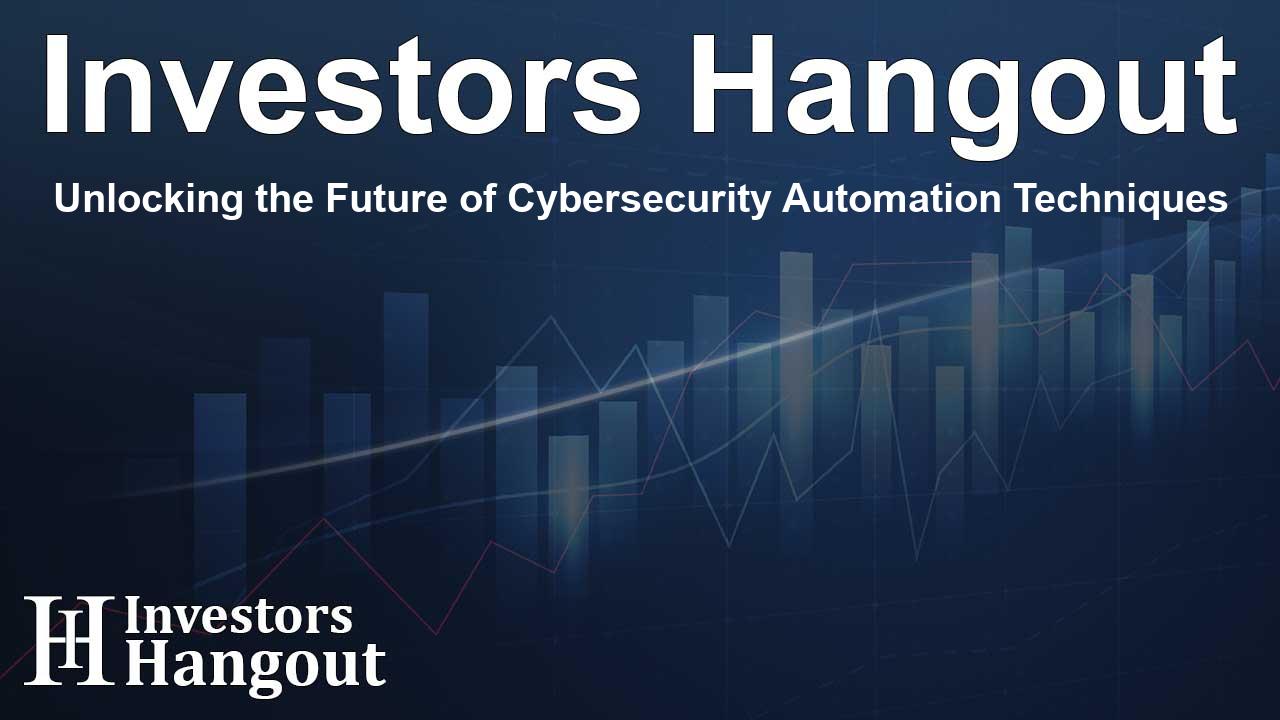Unlocking the Future of Cybersecurity Automation Techniques

Introduction to Cybersecurity Automation Evolution
In the realm of cybersecurity, automation is increasingly recognized as a crucial element in the arsenal of defense strategies employed by professionals. A recent survey focusing on cybersecurity automation has revealed insights into how organizations are adapting and fully utilizing this technology to enhance their defensive capabilities.
Key Findings from the 2024 Research Report
According to research conducted by ThreatQuotient, the evolution of cybersecurity automation adoption has reached new heights. The report, unveiled in late 2024, draws attention to the significance of automation in the daily operations of cybersecurity teams. It surveyed 750 senior cybersecurity professionals across various sectors, indicating a growing acknowledgment of automation's role in contemporary cyber defense.
Importance of Cybersecurity Automation
The findings reveal that a remarkable 80% of respondents consider cybersecurity automation integral to their defensive strategy. This marks an increase from 75% in the previous year, underscoring a consistent upward trend. Budgets allocated for cybersecurity automation have equally seen an increase, with an impressive 99% of participants confirming elevated spending in this area. What's notably encouraging is that 39% of those surveyed now possess dedicated budgets for automation, a significant leap from just 18.5% last year.
Use Cases and Challenges
The report highlights key use cases for automation, with incident response taking the lead at 32%. This is closely followed by phishing analysis and threat hunting, demonstrating a clear understanding among organizations regarding the critical areas where automation can deliver substantial benefits. However, the journey toward full automation is not without challenges. Technological issues, budget constraints, and time limitations remain prevailing hurdles, albeit trust in automated processes has grown, reducing skepticism among cybersecurity teams.
Metrics for Measuring Success
When it comes to evaluating the return on investment (ROI) of cybersecurity automation, employee satisfaction emerged as a primary metric for 43% of leaders. This metric, although important, has seen a decline from the previous year's 61.5%. Metrics tied to resource management and operational efficiency are becoming increasingly prioritized, emphasizing the shift toward a productivity-oriented approach in cybersecurity strategies.
Collaborative Intelligence and Integration
In an era marked by interconnected threats, sharing cyber threat intelligence has gained immense importance. An astounding 99% of professionals reported that they engage in some form of threat intelligence sharing, while 54% collaborate with direct partners and suppliers. This network of sharing bolsters collective knowledge and response capabilities against evolving cyber threats.
AI's Rising Influence
Artificial Intelligence (AI) is also making significant strides in cybersecurity, with 58% of respondents utilizing AI technologies. Half are applying AI comprehensively, indicating its value across various operations, while another 20% are gearing up for future integrations. This trend reflects a broader emphasis on utilizing advanced technologies to bolster security efforts.
Anticipating Future Threats
Looking ahead, professionals predict an increasing likelihood of cyber-physical attacks, phishing, and ransomware incidents. Warnings regarding supply chain vulnerabilities and potential state-sponsored attacks are also being raised, underscoring the necessity for adaptive and proactive security measures.
Conclusion: The Path Forward
As organizations strive to navigate the complexities of the digital landscape, embracing cybersecurity automation and intelligence sharing remains imperative. Leon Ward from ThreatQuotient aptly stated that a collaborative approach in the cybersecurity environment can significantly enhance organizational defenses. Continuous investment in automation not only improves operational efficiency but also strengthens resilience against emerging threats, paving the way toward a more secure future.
Frequently Asked Questions
What is the significance of the cybersecurity automation report?
This report highlights the evolution of cybersecurity automation adoption and its crucial role in contemporary threat management strategies.
Which use cases are most prevalent in cybersecurity automation?
Incident response, phishing analysis, and threat hunting are among the most commonly automated tasks identified in the report.
What challenges do organizations face in adopting automation?
Organizations frequently encounter technological issues, budget constraints, and time limitations impacting their ability to adopt effective automation.
How do organizations measure the success of automation?
Employee satisfaction, resource management, and operational efficiency metrics are primarily used to assess the ROI of cybersecurity automation.
What role does AI play in cybersecurity?
AI technology is increasingly being utilized to enhance cybersecurity measures, with an expanding number of professionals recognizing its potential.
About Investors Hangout
Investors Hangout is a leading online stock forum for financial discussion and learning, offering a wide range of free tools and resources. It draws in traders of all levels, who exchange market knowledge, investigate trading tactics, and keep an eye on industry developments in real time. Featuring financial articles, stock message boards, quotes, charts, company profiles, and live news updates. Through cooperative learning and a wealth of informational resources, it helps users from novices creating their first portfolios to experts honing their techniques. Join Investors Hangout today: https://investorshangout.com/
Disclaimer: The content of this article is solely for general informational purposes only; it does not represent legal, financial, or investment advice. Investors Hangout does not offer financial advice; the author is not a licensed financial advisor. Consult a qualified advisor before making any financial or investment decisions based on this article. The author's interpretation of publicly available data shapes the opinions presented here; as a result, they should not be taken as advice to purchase, sell, or hold any securities mentioned or any other investments. The author does not guarantee the accuracy, completeness, or timeliness of any material, providing it "as is." Information and market conditions may change; past performance is not indicative of future outcomes. If any of the material offered here is inaccurate, please contact us for corrections.